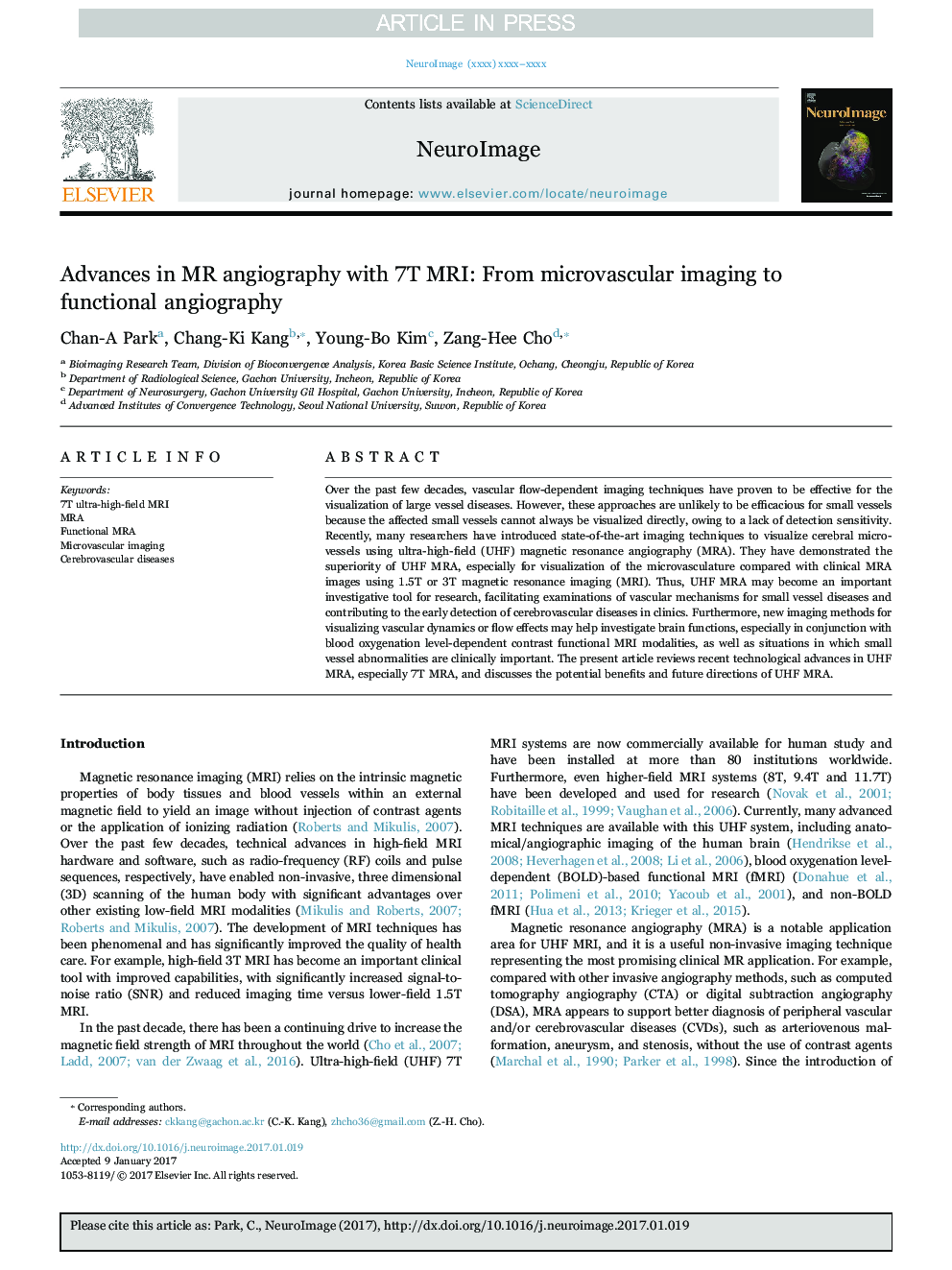| Article ID | Journal | Published Year | Pages | File Type |
|---|---|---|---|---|
| 8687232 | NeuroImage | 2018 | 10 Pages |
Abstract
Over the past few decades, vascular flow-dependent imaging techniques have proven to be effective for the visualization of large vessel diseases. However, these approaches are unlikely to be efficacious for small vessels because the affected small vessels cannot always be visualized directly, owing to a lack of detection sensitivity. Recently, many researchers have introduced state-of-the-art imaging techniques to visualize cerebral microvessels using ultra-high-field (UHF) magnetic resonance angiography (MRA). They have demonstrated the superiority of UHF MRA, especially for visualization of the microvasculature compared with clinical MRA images using 1.5T or 3T magnetic resonance imaging (MRI). Thus, UHF MRA may become an important investigative tool for research, facilitating examinations of vascular mechanisms for small vessel diseases and contributing to the early detection of cerebrovascular diseases in clinics. Furthermore, new imaging methods for visualizing vascular dynamics or flow effects may help investigate brain functions, especially in conjunction with blood oxygenation level-dependent contrast functional MRI modalities, as well as situations in which small vessel abnormalities are clinically important. The present article reviews recent technological advances in UHF MRA, especially 7T MRA, and discusses the potential benefits and future directions of UHF MRA.
Related Topics
Life Sciences
Neuroscience
Cognitive Neuroscience
Authors
Chan-A Park, Chang-Ki Kang, Young-Bo Kim, Zang-Hee Cho,
